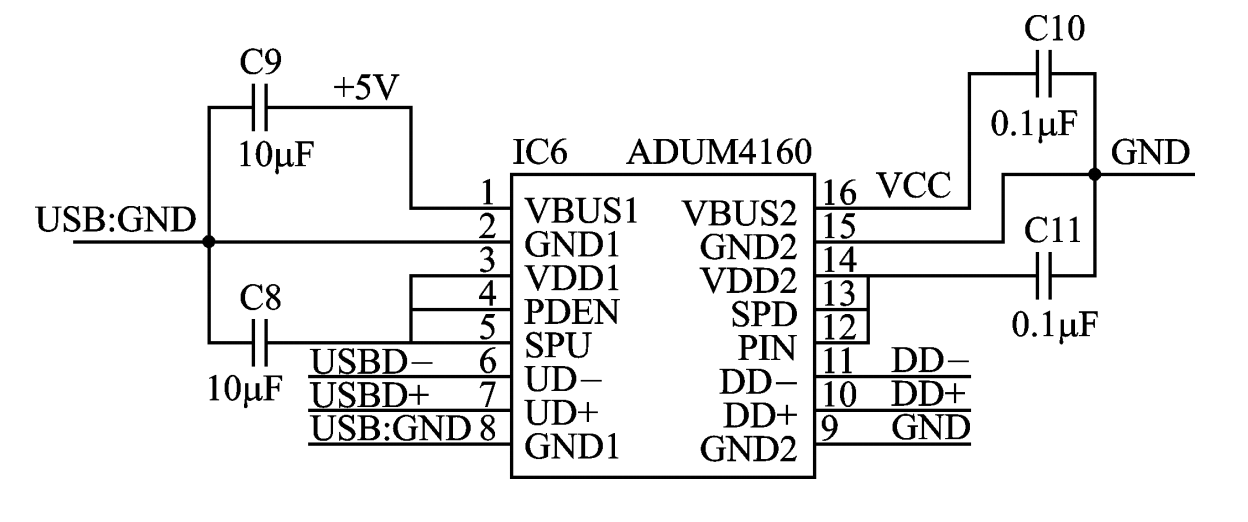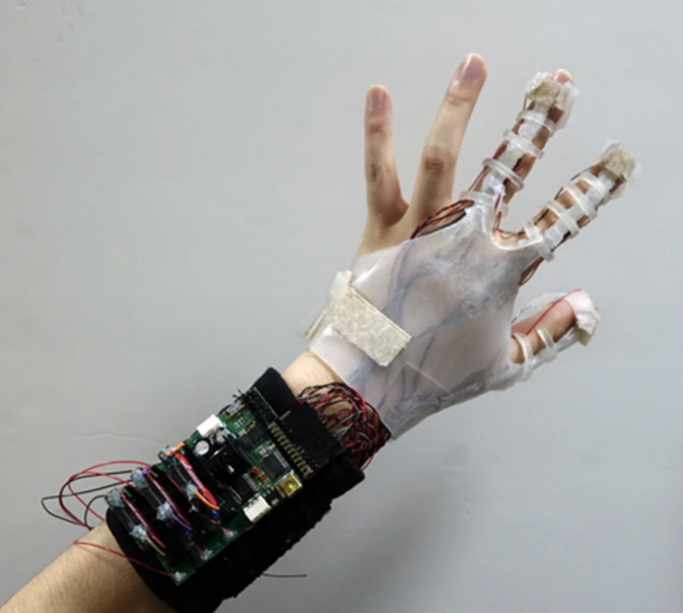1. Introduction
Nowadays, as more and more intelligentially, there is a huge improvement in the application of different biosensors in medical care, industrial engineering, virtual reality and also technological products like smart watches, which gives a very efficient and convenient way in production and consumption. Today, many biosensors are used in hospital and research department, which largely increased the accuracy in diagnosing illness especially for common diseases with high mortality rate also decreased the total time duration. One of the most widely-used biosensors in medical care is the piezoelectric biosensors made from piezoelectric materials. In the 1960s, there is an initial assumption of wearable feedback system, it became in the spotlight as the inventor’s research lasted for fifty years. Nowadays, inventors are focusing on choosing different materials of wearable haptic biosensors, aiming to produce a biosensor that has high sensitivity, is not easy to deform, which highly increased its practicability in different industries and fields to increase efficiency. This paper first explained the working principles of diverse biosensors, based on some previous papers with specific type of sensors, then summarized those existing research results and talked about the application of haptic biosensors specifically in medical care field, mainly the use of PZT sensors and aimed to provide reliable information for further research on wearable haptic biosensors.
2. The principle of biosensors
A biosensor is an analytical device that converts a biological response in an electrical signal by means of a transducer. And send the output to meet information transmission requirements, process, storage, display, record and control. The object that has been measured can be detected by sensing element, then send it to transducer, finally the electrical signal can be produced. A sensor usually composed by two parts: sensing element and transducer [1]. There are several kinds of sensors; they all play essential roles in different area.
Electrical resistance strain sensor is a sensor that converts the physical quantity pressure to electrical signal output. The electrical resistance strain sensor with the resistance strain gauge as transducer is mainly composed by elastic element, resistance strain gauge which is pasted on it, circuit of output electrical signal and a compensation circuit. The elastic element is the key of the whole structure; there are several forms of it to raise the stability to detect the measured quantity. The principle of electrical resistance strain sensor is when the measured object can form an elastic deformation on the elastic element, the resistance strain gauge can detect the change of conversion from elastic deformation to resistance value. Next, the electrical signal can be output through circuits [2].
Heart rate sensor detects the changes in the arterial pressure or uses the property of blood which is it absorption of near infrared light, converts it to electrical signals. The most common method is photoelectric measurement. The photoelectric heart rate sensor sends out a beam of light. When the heart pumps, the light of specific wavelength will be largely absorbed by blood. The fluctuation of heartbeat can be measured by detecting the reflection light. Also, method of electrocardiosignal detection can be used in the sensors. Another way is to use high-specification sensors to capture the vibration of body cause by heartbeat [3].
Motion sensor is a sensor that fixed in specific area of a moving object; it can provide information of the location of the object, and monitor the physiological and motion information of a human body [4].
Photoelectric sensor is a sensor converts the changes of light intensity to electrical signals to control. It is composed by a transmitter, receptor and detection circuit [5].
Optical biosensors emit an optical signal. There are several types of detection. The first way is through a beam. Both transmitter and receiver are placed pointing face-to face, enable to create a straight light beam path. The second one is diffuse reflective. The light is reflected by the object when it is transmitted by transmitter and the reflection light is measured by the receiver. The third way is retro-reflective. The reflector reflects and the receiver receives the light beams transmitted by the transmitter. The light beam breaks when any object comes in between. Based on difference between light beam intensity and other parameters object can be detected or sensed at the receiver.
The most important sensor in wearable haptic sensory system is the piezoelectric sensor. It is the application of piezoelectric effect, which is the generation of electrical potential of voltage when mechanical strain is applied, or vice versa. A piezoelectric sensor is made from PZT, which is a crystal or a substance of a crystalline properties that can produce the voltage. PZT is a non-centrosymmetric crystal structure with a net non-zero charge in each crystal unit cell before applying mechanical stress. When pressure is applied to PZT, an electrical voltage is produced due to charge deformation, the titanium ion’s position is shifted inside the unit cell and the development of electrical polarity takes place. As a result, the unit cell turns into an electric dipole. Some PZT materials are: Quartz crystal, topaz, Barium titanate, Polyvinylidene fluoride (PVDF)... For example, a piezoelectric microbalance biosensor has the quartz single crystal as its sensing unit, it can detect the change of mass because of the synthesis of antigen of a specific-protein complexes. It has application in detecting bacteria, virus, DNA and biochemical indexes. The working principle of virus detection using a piezoelectric biosensor is when a mass increases due to the interactions by the AC voltage decreases, probe antibodies are fixed on the piezoelectric material’s upper electrode surface, the target antigen then binds with the probe antibodies changing mass on the electrode surface, change in mass leads to a time-dependent frequency shift that is represented by the frequency change of the material in the oscillation circuit.
3. The research of biosensors
According to the research on the BMD101 wearable heart rate sensor, it gives a lot of data to improve the application of BMD101 sensor, from data channel isolation, pure power supply, selection of ECG electrodes and software design [6]. These experiments show that the effect of directly using the DC power source in the notebook will be better than ordinary compatibles. An anti-interference measures for data transmission to a PC through a USB port is used, which is the ADUM4160 chip, as showed in Fig.1. Flexible fabric ECG electrodes are recommended as its excellent flexibility and electrical conductivity, especially for its good performance when it has a contact with a sweaty skin of human body. Finally, the system uses a wireless transmission module for data transmission, this greatly solved cross-talk of the PC to the BMD101 ECG sensor.

Figure 1. Digital signal isolation [6].
Luo et al. set a series of experiment to design a node for motion sensor [7]. Three quantities have been tested: heart rate, temperature and number of steps with distance travelled. The standard electronic sphygmomanometer, thermometer and test instruments is to measure the users’ heart rate, temperature of the same test point and users with different speed and step size along a 5-metre-long straight line. Enable to compare the results of the practical circuits and measured results. As a result, very small differences have been showed in these experiments. The ADS1292 module was used to measure heart rate, the LMT70 module was used to measure temperature, and the MPU6050 module was used to measure the number of steps and distance travelled. The Bluetooth serial port module HC-05 was used to monitor the mobile data online. The system structure is simple, real-time display with great accuracy and stability.
An arched flexible piezoelectric sensor is used in the experiments based on [8]. In this literature, a motion evaluation system has been investigated. This system uses a PVDF flexible piezoelectric sensor to detect the human body impulse when exercising with different intensity and time. Detecting and measuring human body impulse signals through step test and spanning bike exercises. These experiments all show the system’s feasibility, composed of ESP32 single chip microcomputer, PyQt framework upper computer.
Bai mainly explains the design and application of flexible piezoelectric sensors [9]. Adding PVA to the piezoelectric composite of PZT/MFC lowers the hardness and increases cellulose-based composites’ flexibility. The results indicate that this sensor has higher output power and greater sensitivity and stability than normal piezoelectric sensors. In addition, this flexible piezoelectric sensor can be applied to wearable haptic systems. Different composition cam be used to detect various things. For example, some can monitor plantar pressure and others can monitor muscle group pressure.
4. The application of haptic biosensors in healthcare and virtual reality
Electrical resistance strain sensors can be used in diverse sensory systems, such as load cells, torque, pressure, displacement, and acceleration [2]. Heart rate sensor is one of the most common sensors in our daily life. Almost every smart watch contains wearable biosensors. Some brands occupy most of the market resources through their low prices of the smart watches [3]. Also, those motion sensors are assembled in wearable equipment such as smartwatches. It can record the daily exercises, sleep, diet and monitor the body health through these data [7]. Piezoelectric flexible pressure sensor can be used to detect pressure ulcers in diabetic complications prevent varicosity of the lower limbs and such medical and recovery fields [8]. There is a new biosensor has been investigated, which can detect the cerebral cancer via very small amount of blood. This type of biosensor uses surface-enhanced Raman spectroscopy to detect tumor derivatives. This device has a very high specification and accuracy, largely decreasing the time and workload when diagnosing the patients who suffered from cancers. The PZT materials are used for energy harvesting and biomedical electronics. The piezoelectric resonance has been applied to a point sensor. The sensor element consists of a cylindrical piezoelectric transducer, made of the ceramic material lead ziconate titanate and divided into two elements: one for vibration and the other for detection. Nanoribbons of PZT have been developed enabling in vivo measurements of soft tissue viscoelasticity. The device is made by a stacking and microcontact transferring method. An array of actuators is laminated on the skin and stimulated to generate tissue deformations that are measured by another set of the PZT sensors, to provide information on the mechanical properties of skin. The polar polymers, such as PVDF, can also be used in flexible ferroelectric skin to detect the temperature distribution on the human palm. By placing gold electrode arrays on the top and bottom of the film, the temperature sensor can map the temperature variation of a human hand. In addition, a PZT sensing element can be attached to a catheter due to its flexibility. The external electrode is made by the deposition of a thin film of copper. Catheter-based sensors have been also used to measure the real-time flow in biosensing applications.
There is a detailed introduction of the application of piezoelectric sensors in virtual reality glove system [10]. The glove can act as a text input device. There are many piezoelectric sensors embedded in the gloves, enable to detect the movements of players and send information of motion to VR via Bluetooth. The voltage produced by the piezoelectric sensor deformation gives out finger motion information (Fig. 2).

Figure 2. The appearance of the glove [10].
5. Conclusion
This paper gives the application of diverse biosensors in real life from different aspects such as healthcare, engineering, production, and so on, according to their basic rules of operating. This paper mainly introduced the working principles of electrical resistance sensors, heart rate sensors, motion sensors, photoelectric sensors, optical biosensors and piezoelectric sensors. Then concluded a few developments of wearable heart rate sensors, motion sensors and also piezoelectric sensors, based on design and real experiments of the materials used, node and transmission module..., enable to get progress in the function of these sensors. Lastly, pointed out that the haptic biosensors play the important roles not only to the common industries that used to know, but also the developed technologies, like the actual feelings when players are using the virtual reality, through the researches of several biosensors, to rise the users’ feeling experiences and happiness. This paper contributed to the applications of biosensors mainly in medical care, and is good for future research and development in this field. The future research could set up more experiments to enhance the theoretical results, enable to further rise the accuracy and reliability of the information, also let the biosensors exert the biggest influences to the whole world, especially to the convenience and efficiency in healthcare department, which could give the positive effects to the people’s life expectancy, happiness index, working efficiency and even the economic growth due to the good health condition of the general public.



